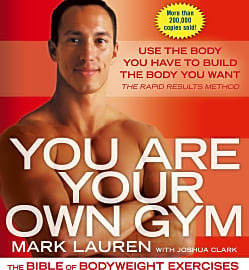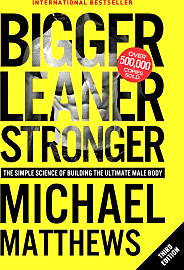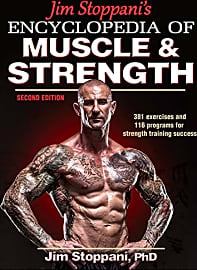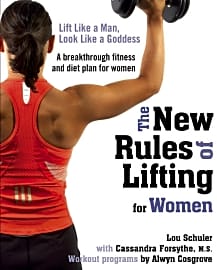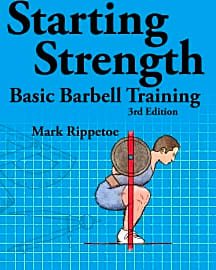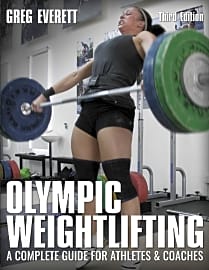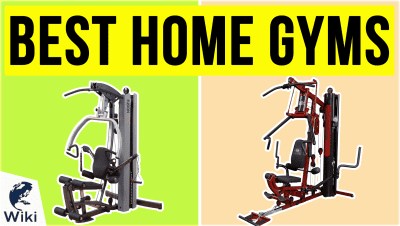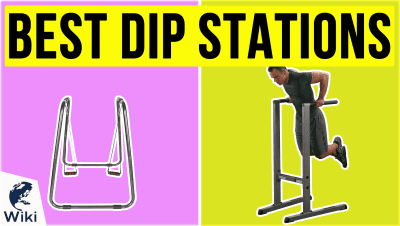The 10 Best Weightlifting Books

This wiki has been updated 38 times since it was first published in October of 2015. Whether you're just starting strength training, are hoping to lose a few pounds, or are an advanced lifter looking to amp up your routine and bulk up with some additional knowledge, one of these weightlifting books will be perfect for you. These selections will give you the technical know-how to take charge of your sessions and include options both for newbies and pros. When users buy our independently chosen editorial recommendations, we may earn commissions to help fund the Wiki.
Editor's Notes
March 31, 2020:
Weightlifting books come in many different formats, some of which are ideal for coaches and competitive lifters, and others that are ideal for the average person trying to slim down or add a few pounds of lean muscle mass. We made sure to include all kinds on this list to ensure there is at least one or two options to fit every need.
Many people mistakenly believe that you need to have a costly fitness facility membership or a fully-equipped home gym to get into better shape, but You Are Your Own Gym and Overcoming Gravity prove that isn't the case. Both of these books outline exercise and training programs you can do with nothing more than your own body weight. You may want to buy a chin-up bar or dip station to enhance your results and allow for more exercise versatility and variations, but neither of these pieces of equipment is very costly nor required.
For serious lifters and coaches who are interested in the technical side of things, including the mechanics behind common exercises, we recommend Strength Training Anatomy, Olympic Weightlifting, New Encyclopedia of Modern Bodybuilding, Starting Strength, and Practical Programming for Strength Training. While these can certainly also be helpful for the average gym goer looking to put together a more effective training program for themselves, we believe they are best suited to people who want to gain advanced knowledge of how our bodies work and the science of why certain exercises produce the results they do.
If you are looking for a comprehensive book written for the average person that covers everything from nutrition to exercise programs, and which gives scientific data to back up that information, we think Bigger Leaner Stronger is one of the best bets. Not only will it provide you with a step-by-step action plan, but it is also motivational and an engaging read. The New Rules of Lifting for Women is a similar option, but aimed specifically to female readers and with less focus on the scientific reasoning behind the information.
Special Honors
T-Nation Books are great, but sometimes you may need information on something that isn't covered in the ones your have, or you may simply need some extra motivation or help understanding certain strength training principles, and that's where a website like T-Nation can help. Not only is it packed with constantly updated workout regimens, nutrition advice, and feature articles on specific body parts, but it also contains a forum where you can interact with other fitness buffs. t-nation.com
JeFit JeFit is a fitness app for both iOS and Android devices that offers a variety of fitness routine planning and tracking tools to help you get the most from your workouts. Not only is it more convenient to use when inside a gym, but is is infinitely more interactive and better suited to our modern lifestyle. jefit.com
Who Reads Which Weightlifting Books?
If you already have a good regimen, though, you might not need this kind of book.
There are a lot of different kinds of weightlifting books on the market, and that makes a lot of sense when you think about it. You can spend a few short minutes looking into the best ways to get fit and build muscle online, and you’ll come across an endless amount of misinformation and competing styles of exercise. Most of these are one-size-fits-all approaches, however. It can be extraordinarily difficult to tell which method of lifting will give you and your unique body the best results.
That’s why so many people invest in weightlifting books. Compared to the journalistic standards on the internet (pro tip: there are next to none), book publishers — especially in this day and age — have to be as accurate and faithful as possible. What’s more, the additional space for text in a book allows many of these tomes to approach lifting from many different perspectives.
Instead of a single web page with a few dozen moves that are supposed to work for everyone, these books can freely luxuriate in the nuances within their approach or among different approaches. The odds are in your favor to find a regimen that’s right for you. Still, there are some key differences among the books on our list, and understanding who is going to read and employ the techniques of a given book will help you make your selection.
One style of weightlifting book out there is like an expanded version of those online offerings lambasted above. As we pointed out, the book versions of these are going to have more information for each maneuver, allowing you to customize your routine to fit your body and your fitness goals. They're a definite step above the online guides, as they often go into more detail about proper form. That can save you from sustaining a debilitating injury that could set back your fitness progress significantly.
If you already have a good regimen, though, you might not need this kind of book. Instead, delving deeper into the physiology of the muscular system and its triggers for expanded size and strength may be a better option. These are the kinds of books that you’ll also see personal trainers and physical therapists reading, as they give their readers a comprehensive understanding of how and why muscle responds to targeted stresses.
For those of us that have a little more trouble staying motivated and on track than an avid weightlifter or personal trainer, there are books out there that can still transform your life. You might not be able to get as much out of a simple lifting manual or a complex tome on the human body, but you could make a go of an specific, detailed program. Some weightlifting books, though limited in the adjustments you can make for your personal needs, will give you a daily regimen of moves and foods to drastically change your body for the better.
The Benefits Of Strength Training
For the better part of our media culture history since the advent of Hollywood, women have been held to unrealistic standards of youth and physique. In more recent years, the movie industry, as well as the health and fitness sectors of the market, have discovered an immense and as-yet-untapped demographic just waiting to be exploited: men.
Building muscle also has the ability to strengthen bones, which is vital as we age, especially in women, who are more prone to arthritis and osteoporosis.
For all the joy they bring to the world, superhero movies are at the center of this issue, as they routinely present viewers with a male form that is —as the actors who portray these characters are quick to point out — only achievable through extremely painful diet and exercise, eating to the point of sickness, and disregarding actual health.
Many of these supermodel actors may look physically fit, but more often than not their musculature is artificially inflated and their body fat is temporarily shed for shooting days that require them to go shirtless. The most ideal physical state, then, is not the unhealthy superhero, but the healthy individual, be they male, female, or anywhere in between.
That physique involves a lot of strength training, as increased muscle mass can help metabolize fat at more efficient rates. Building muscle also has the ability to strengthen bones, which is vital as we age, especially in women, who are more prone to arthritis and osteoporosis.
It’s important to regard any increase in subjective physical attractiveness as a byproduct of increasing your overall health. That attitude will keep you away from gimmicky programs, unhealthy supplements, and dangerous shortcuts. In the end you’ll feel even better than you look.
Don’t Wait, Get Some Weights
Now that you’ve selected a book that will help you physically train, and you understand the mindset that will get you the best results while protecting your overall health, you need to get some equipment. Some of these decisions will be informed by the routines in your weightlifting book.
These can seem like hefty investments at first, but compared to a gym membership, they quickly pay for themselves.
Certain books are geared toward helping you get fit with as little paraphernalia as possible. These exercises primarily make use of your own body weight, but they do still require some other materials. A good mat is indispensable to most workout routines, as it will help keep your body balanced and your feet safe.
You can also use dumbbells, barbells, pushup assist bars, and a good pull-up bar to target almost any muscle group and create a toned physique. If you require something more intense, you can always make the space necessary to house a home gym. These can seem like hefty investments at first, but compared to a gym membership, they quickly pay for themselves. They also have the added benefit of eliminating certain excuses (travel time, weather, etc.) that might otherwise keep you from getting to the gym.


